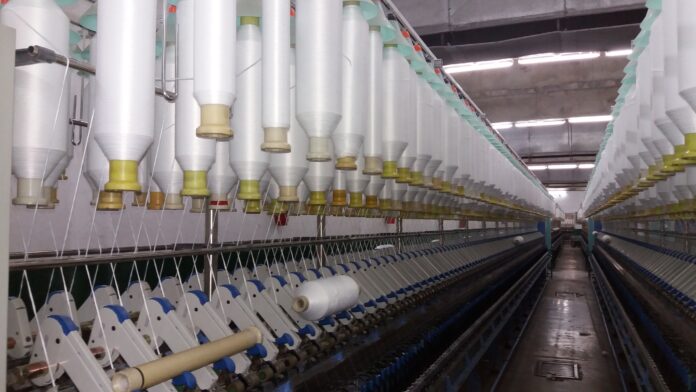“We intend that the name “Nazir Cotton Mills Ltd” shall be forever synonymous with the best in quality, nationally and internationally.”
So Nazir Cotton Mills boldly proclaims on its website. There is only one problem. It is a bit difficult for the Nazir Cotton Mills to be synonymous with the ‘best in quality’, or any quality for that matter, as the mill has not produced any cotton for the last decade. What is a mill to do instead?
Let us back track, and explain what is going on with Nazir Cotton Mills.
The company is a public limited company that was incorporated at least 25 years ago, and is located in Lahore. Its manufacturing unit is located in Sheikhupura. The mill was designed to manufacture and sell yarn of all types. But it failed to do so, since at least 2011. The oldest available annual report is from fiscal year 2016, and if one looks at the ‘Six years at a Glance’ section of the company’s financials, there is a gaping blank where it should say ‘Yarn Sales’.
In fact, since 2011, the company consistently made a loss of Rs8.3 million in 2011, Rs128 million in 2012, and then roughly a loss of around Rs5 million each year between 2013 and 2015. Amazingly, the company actually managed to earn a profit in 2016, of Rs114.113 million, mostly from other income.
But either way, ‘due to the unfavourable market condition, the operation of the mill remained closed during the year under consideration’.
The company also was mired in mild controversy with banks. As the auditors in that year noted, the balances of bank loans amounting to Rs92.2 million remained unsubstantiated for want of confirmatory certificates from the financial institutions. It is sad if the ‘greatest achievement’ a company can muster up in an annual report is that they managed to pay off a loan to Samba Bank.
Fast forward to 2019, and the situation had not exactly improved. In that fiscal year, the company had made a net loss of Rs8.3 million. This was still better than the loss of Rs16.6 million in 2018, or the loss of Rs21.4 million in 2017. Indeed, the accumulated losses stood at Rs 429 million.
And still, the mill remained non-operational. The company blamed it on the textile industry’s ‘difficult’ period – and it is true, the textile industry did suffer a crisis in the mid-2010s.
The auditors served up a blistering report, saying that the company’s current liabilities exceeded current assets by Rs202 million, up from 2018’s Rs199 million. The picture did not look good: the mill had closed its business operations, production remained suspended, and the company has been unable to arrange fresh financing for working capital and other purposes.
“These conditions along with others indicate the existence of material uncertainty that may cause significant doubt about the company’s ability to continue as a going concern and the company may be unable to realise its assets and discharge its liabilities in the normal course of business,” the company noted.
Yet, the company remained curiously optimistic. First, it said it would enter into negotiation with lending banks in 2020.
Second, it said that very soon, the company’s electricity woes would be over. ““The management is of the opinion that if the unit cost of electricity becomes Rs 9 per unit i.e. equal to the unit rate in the neighboring countries, then the company will be able to restart it’s commercial production.” the company claimed.
Third, the company was optimistic about the textile sector’s future, nothing that the government had announced incentives for textile industries particularly in the field of sales tax, and prices of gas and electricity. The government had also announced the per unit price textile sector of Rs 9.50. These conditions could mean that the ill, which had not operated for nearly nine years, might still have a chance.
The company’s management was not deluded. As many analysts have noted, that 2020 has been a good year for the textile industry, particular in the latter half. Orders had been building up due to Covid-19. Additionally, low interest rates meant that companies were now jumping on the chance to expand, and utilizing new government and State Bank of Pakistan options, like the ‘Temporary Economic Refinance Facility’. The exchange rate has also helped speed up the process, as previous governments had pegged the rupee for long periods, eroding the textile sector’s competitiveness.
Alas, none of this seems to apply to Nazir Cotton Mills. In a notice sent to the PSX on December 9, all of of the company’s concentration on low electricity prices were for naught. Turns out, Wapda was refusing to restart the mills electricity at all, despite an order form the Lahore High Court. In refusing to do so, Wapda is now under litigation, as the company had filed a contempt of court.
It is a little hard to justify the existence of your mill if you do not even have access to the grid to begin with. Which is why, the mill received a Rs5 million loan from sponsors to try their hand at the dairy business. The idea is that should it be successful, than perhaps the company can leave the PSX’s defaulter’s list. In doing so, ‘Nazir Cotton Mills’ will have to change their name to ‘Nazir Multiple Industries’. Here is to hoping Wapda doesn’t ignore them the second time around.

























Salaam sir ! I have specially certified babri cotton mils ltd last 2015 !! I want apply for you office ! Please help me work of hard ! Pray for you life !!
Thanks for you